Rogers horse chestnut
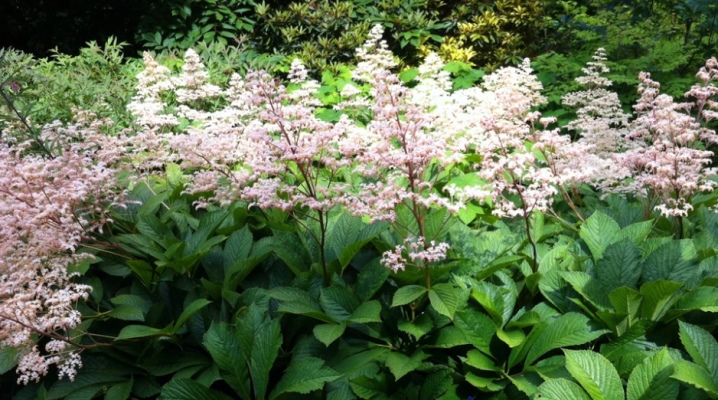
Rogersia is an exotic flower that is difficult to reproach for being capricious. If you just take care of him, without frills and really big work, he can create beauty with an Asian mood on the site for more than 10 years. He transforms the garden, decorates the local area. In a word, it is worth looking at for those who observe aesthetics near their home.
Description
Rogersia chestnut leaves also have an unusual history of discovery. It was discovered by accident, in the century before last, during an American expedition led by Admiral John Rogers. That is why the plant with an Asian range has an American name.
Rogersia belongs to the Kamnelomkovy family (there are only about six hundred plant species in it). In its natural environment, the flower can often be found near water bodies, on the banks next to humid forests. This means that in the garden, in the garden, it can be cultivated near the water.

The main distinguishing feature of the plant is its large, very powerful leaves, which create an unusual visual effect. They "sit" on long petioles, and their color can change several times a year. Initially, the leaves of this culture are purple, with a brown tint, then they acquire a bright green color, and by autumn they can change several "outfits": purple, and red, and golden, and bronze. What kind of "outfit" the horse-chestnut rogers prefers depends on the variety. But the length of one sheet plate in any case will be about half a meter. The plant has a taproot, capable of growing horizontal branches.
The flowers of this plant are small, they are collected in inflorescences. They are distinguished by a light and pleasant aroma. If they are garden hybrids, the flowers can be cream, pink, or even yellow. And flowering will stretch for at least a month, and this period is very beautiful for Rogers. But culture is good not only because of how it blooms. The size of the leaves is what attracts the most about the plant. And after a few years, Rodgersia Aesculifolia will look like a sprawling shrub. Definitely, then it will be a decoration of the site.
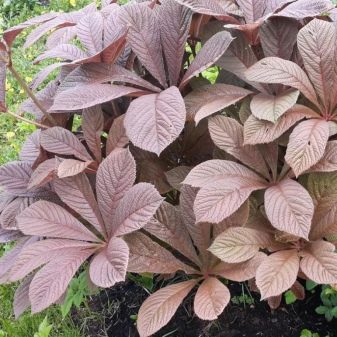
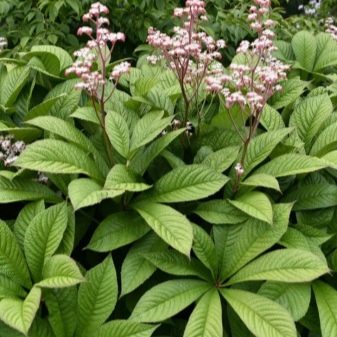
Varieties
There are a lot of plant varieties, this is not an exaggeration, but each variety belongs to a specific species. Here, it is the horse-chestnut rogersia that is described, and this name is quite understandable: the leaves of the culture very much resemble the leaves ("paws") of the horse chestnut. This plant loves the shade and even in the shade can grow up to almost one and a half meters.
This is a frost-hardy species of Rogers, and therefore it is grown in regions with so-called extreme farming. The leaves of this plant have a finger-dissected structure and most often they have a green color with a golden tint. Rather, even with bronze. On one petiole there can be from 5 to 7 leaves, of which the basal rosette of the bush consists. Flowers of this species are often white or pink, gather in elegant and rather large panicles. In the regions of the middle lane (where varieties of this species are most often planted), Rogersia does not bloom so long - from the end of June to the middle of the next month.
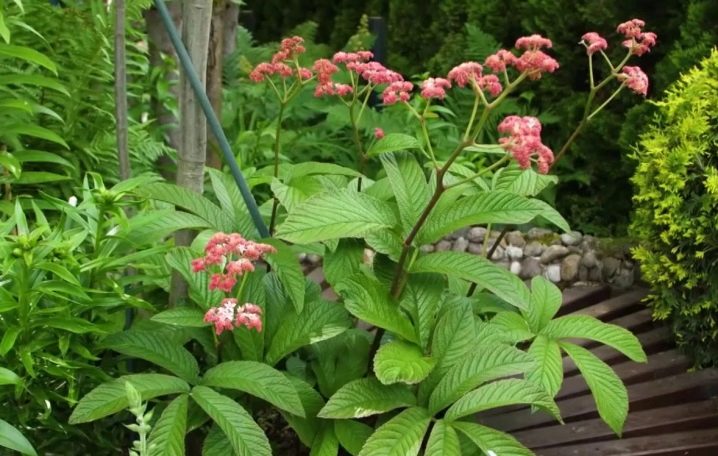
Small recommendations for choosing varieties:
- if you want maximum brightness on the site, you should choose the "Fireworks" variety;
- if you need a panicle color from deep pink to red, the Ideal and Proud varieties are suitable;
- snow-white inflorescences will be provided by the Pagoda variety;
- pure pink color - "Cherry Blush", "Roothaut", "Beauty";
- red color will be in the variety "Red Leaf";
- bronze shades are good for "Cherry blush" and "Brownleaf";
- evergreen color will be provided by "Smaragd";
- the change in color of the leaves, and very effective, is guaranteed by the varieties "Choclet Wayz" and "Cherry Blush".
And another interesting acquisition for creating an unusual landscape design on the site can be garden forms-giants of this type of Rogers: "Big Mama" with very large leaves with a pointed top, as well as "Hercules" with its funnel-shaped outlines of leaves and "Irish Bronze" with beautiful and compact bush shapes.
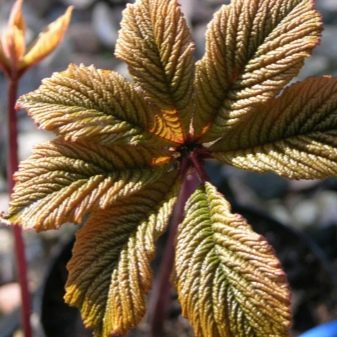
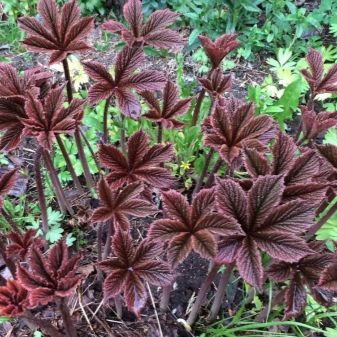
Landing
First of all, you need to find the optimal place for the Rogers. As already noted, the plant prefers shade, and it also needs an area where there will be no drafts. On fertile soil, the culture takes root very well, soon it grows into a rather big bush. If there are small plants nearby, it is better not to make them neighbors of the Rogers: it can oppress them.
How to prepare a pit for landing:
- add peat, a little compost (peat can be replaced with rotted manure);
- mix everything well with the earth;
- lay broken brick or crushed stone on the bottom of the pit, which will become a good drainage lining and will not allow moisture to stagnate.
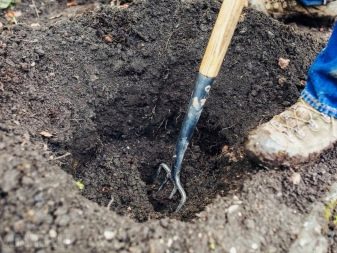
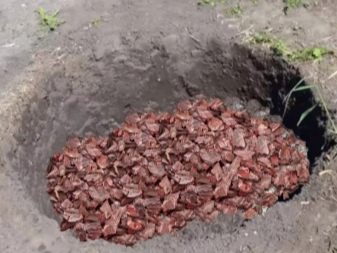
Do not deeply deepen the young Rogers, 8 cm down is enough. If several samples are planted at once, there should be an interval of at least 80 cm between them.After the plant is planted, the ground must be well watered, and then the soil must be properly mulched at its base (this is necessary so that the moisture does not evaporate).
Important: planting different varieties of Rogers side by side is not a good idea, because cross-pollination will be inevitable.
The plant can be planted both in spring and autumn. But if there is something to choose from, then autumn is a better time. Until spring, Rogers is likely to have time to develop a powerful root system, which is good for sufficient spring vegetation.
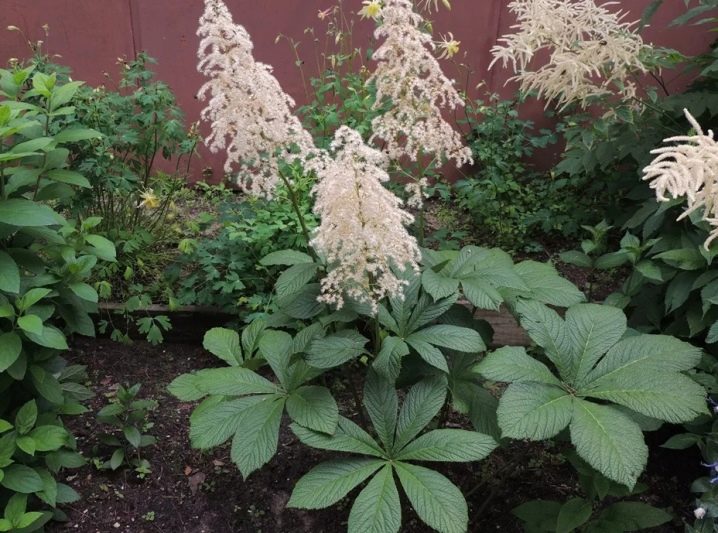
Care
Growing in the open field, Rogers is a really uncaptious flower. Eye and eye for her is not required, but still minimal maintenance is required.
Consider what care is.
- Maintaining the moistened state of the soil. What culture does not like is the drying out of the soil. If it is hot and there is no rain, you can water it abundantly.
- Feeding with organics and minerals during the season. The growing season is the most vulnerable in this regard. Somewhere from the last days of April to the end of spring, every 10 days, Rogers needs chicken manure diluted with water in a ratio of 1 to 10. If you replace it with minerals, you should take calcium nitrate (for 20 g of nitrate, 10 liters of water). In June-July, it is worth feeding the plant with minerals, with an emphasis on phosphorus and potassium, so that the Rogersia blooms perfectly. And by mid-August, feeding is slowed down so that the flower has time to prepare for winter.
- Preparation for wintering. This period can be considered responsible. You need to cut off all the leaves and all the shoots. Fallen leaves will go to cover the base. And if the climate in the region does not spare such crops, it makes sense to additionally cover the plant with spunbond or something like that.
- Prevention of rot. This plant is not very afraid of fungi, but if the rainy weather drags on, it can be attacked by all sorts of rot. We'll have to cut off all the affected parts of the Rogers, and then treat the culture with fungicides. For example, Ridomilom Gold.
- Regular loosening and mulching. This is also necessary so that the soil does not dry out. Mulching will prevent moisture from quickly evaporating, and the loosened earth will not become an impenetrable door for oxygen. Peat often becomes the mulch, but tree bark can also be used.
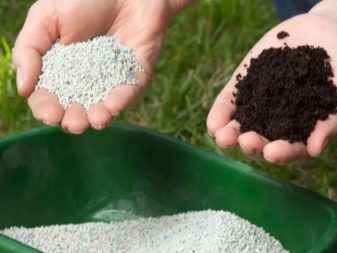
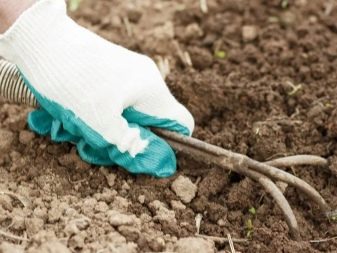
It may also become necessary over time for a Rogers transplant. Since the plant belongs to perennials, it can not change its place for ten years. But it happens that one cannot do without a transplant, and then the plant must be transplanted to a new place in the spring, in its second half.In the planting pit, there will be a mandatory drainage layer, introduced organic matter. And after transplanting, you need to make sure that the rhizome does not show through the upper layers of the soil mixture.
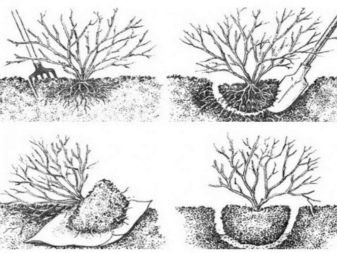
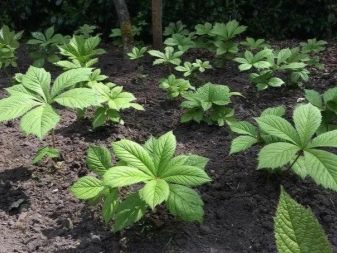
Diseases and pests
Rogersia fungi, as already noted, is not particularly afraid. Moreover, this plant is capable of showing even some kind of antibacterial effect. Still, one should beware of slugs, which are especially fond of rhizomes, and snails. Rot can attack the plant on rainy days, especially when it rains for a long time.
In order not to leave a chance for diseases and pests, you should weed the ground in time, remove weeds, and fight the sod. Then the slugs will simply have nowhere to settle, and rot starts much less often in the weeded earth.
But if the plant has already been attacked, one cannot hesitate to remove the affected parts. During the day, it is treated with a fungicide, preventing further damage.
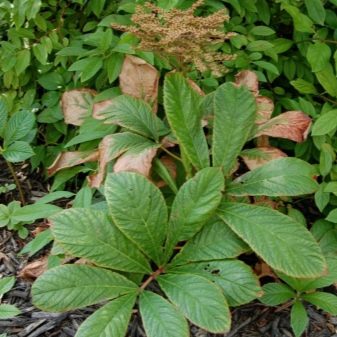
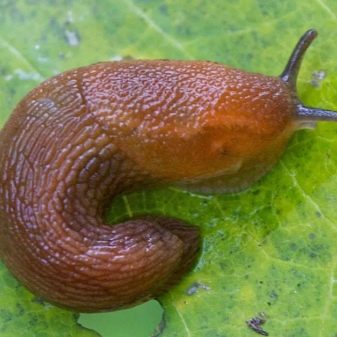
Reproduction
There are 3 traditional ways to help propagate a plant: cuttings, seed and bush division. The seed method is predictably considered the most difficult, but the number of young seedlings thus increases.
The main stages of this technique are as follows.
- After collecting seeds in the fall, they must be planted in a container where a moist fertile substrate has already been prepared. The seeds are buried by 1 cm. It is good if the soil contains peat, sand and coconut. You can buy ready-made soil mixture at the store.
- The container with seeds is covered with a film (or glass), sent to the refrigerator.
- After 2 weeks, the container is transferred to a light warm windowsill. Seedlings can be expected within a month.
- After strengthening the seedlings, they can be adapted to outdoor conditions: from time to time remove the film / glass. On the first day, 15 minutes of adaptation is enough, and then every day plus half an hour.
- When the seedlings grow up to 10 cm, they need to be dived into separate containers.
- After the frost has passed, young plants are taken out into the street, and there they will stand in the shade of trees.
- It is better to plant seedlings in a permanent place in the fall. They will not bloom immediately, but only in the third or fourth year.
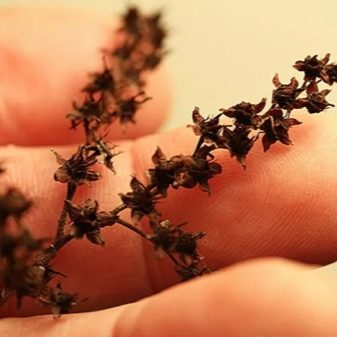
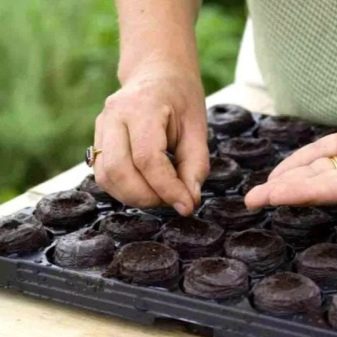
Propagated by Rogers and dividing the bush. The plant is dug up, cut into several parts with a shovel, each part comes with three growth points. Slices must be sprinkled with ash. And these delenki are planted in a new place on the same day.
Cutting also involves the use of leaves that have a "heel" at the tip. Before planting, the cuttings should be in the Kornevin powder, this will improve the formation of roots. To prevent the sprouts from drying out, you can organize a mini-greenhouse on top.
Cuttings must be provided with regular ventilation and watering. After about 2 weeks, it will be clear if rooting has occurred. If the stems turn black at the base, you will need to duplicate the procedure.
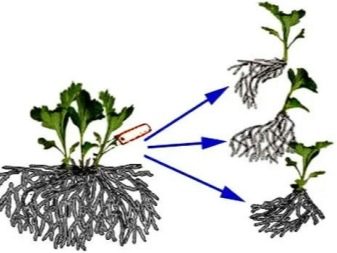
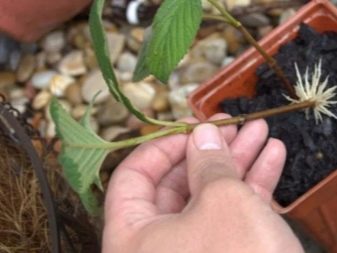
Examples in landscape design
And here are a few options that will show how beautiful Rogers looks on the site.
- This is how the still small leaves of the plant look, and among the greenery they will be a rather bright spot. And forget-me-nots at the "feet" will only emphasize the unusualness of Rogers.
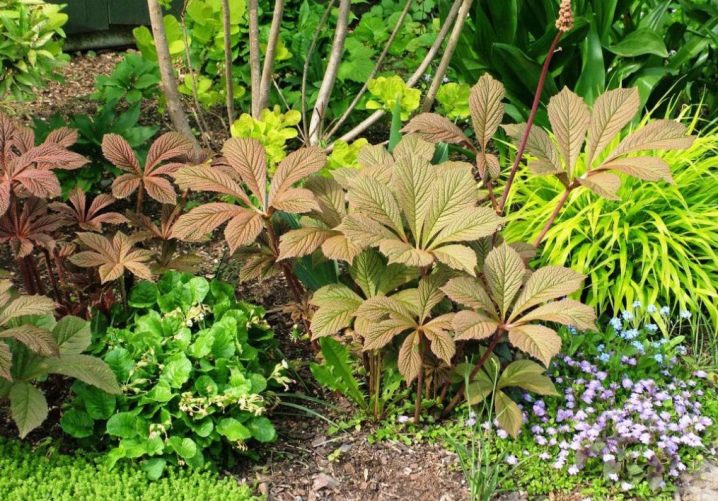
- The panicles can rise quite noticeably and become the center of the flower bed (for example, if it is decided to make the flower beds in the form of a pyramid). Those who are not particularly versed in plant growing may get the impression that a small chestnut is growing in the flowerbed.
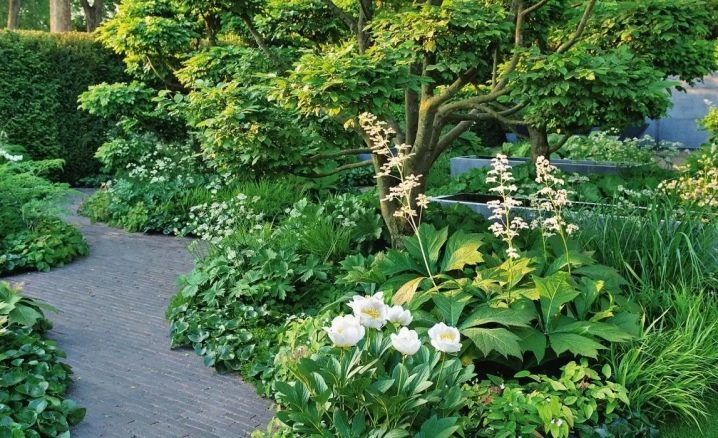
- Rogers can be used to beautifully frame a bench in the garden. Taking into account its possible growth, this will be effective. And it's great if you can find a variety with a bright color change throughout the season.
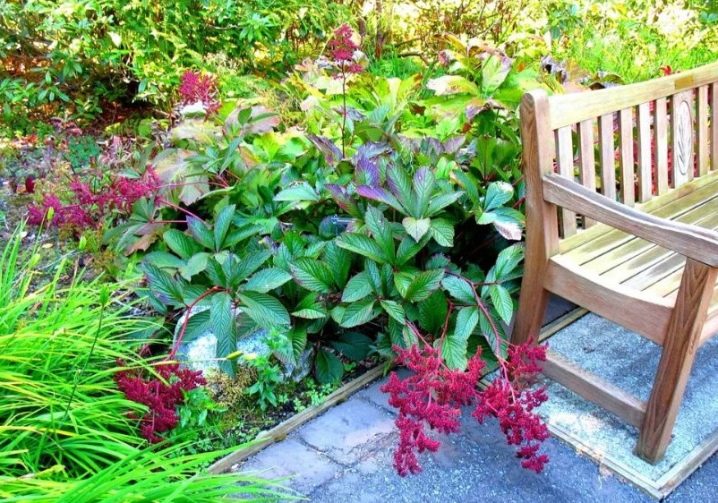
- And here are the picturesque leaves of the culture, over which panicles grow. Very large, very visible.
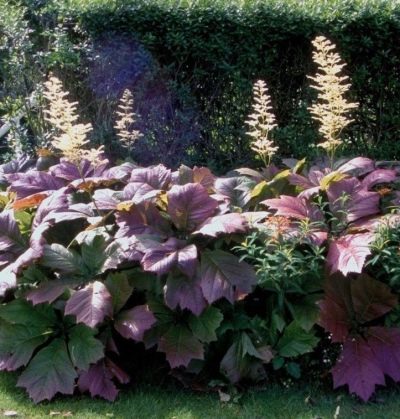
- And here the leaves are more like maple leaves. It will be an expressive sight against the wall of the house.

- And again the wall of the house and Rogers: it looks like a very neat and unusual bush.
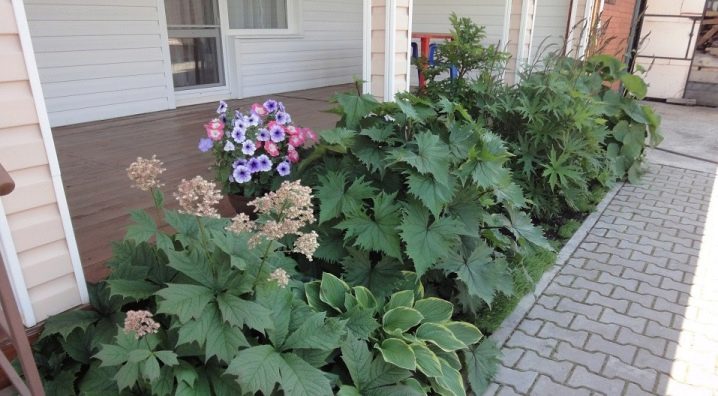
- Pink panicles especially vividly remind that this plant belongs to Asian.
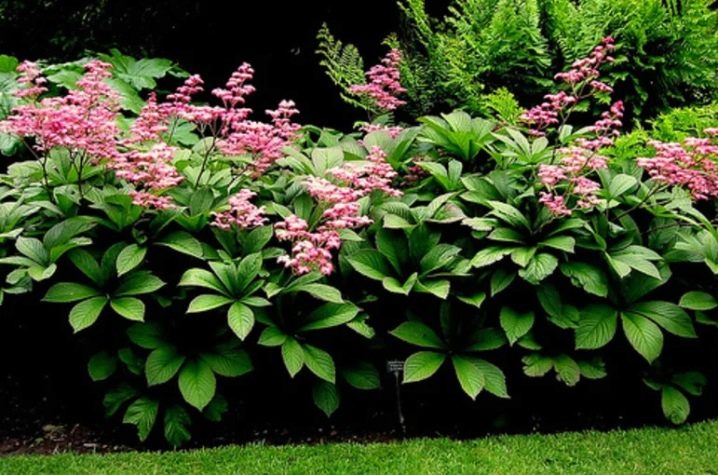













The comment was sent successfully.